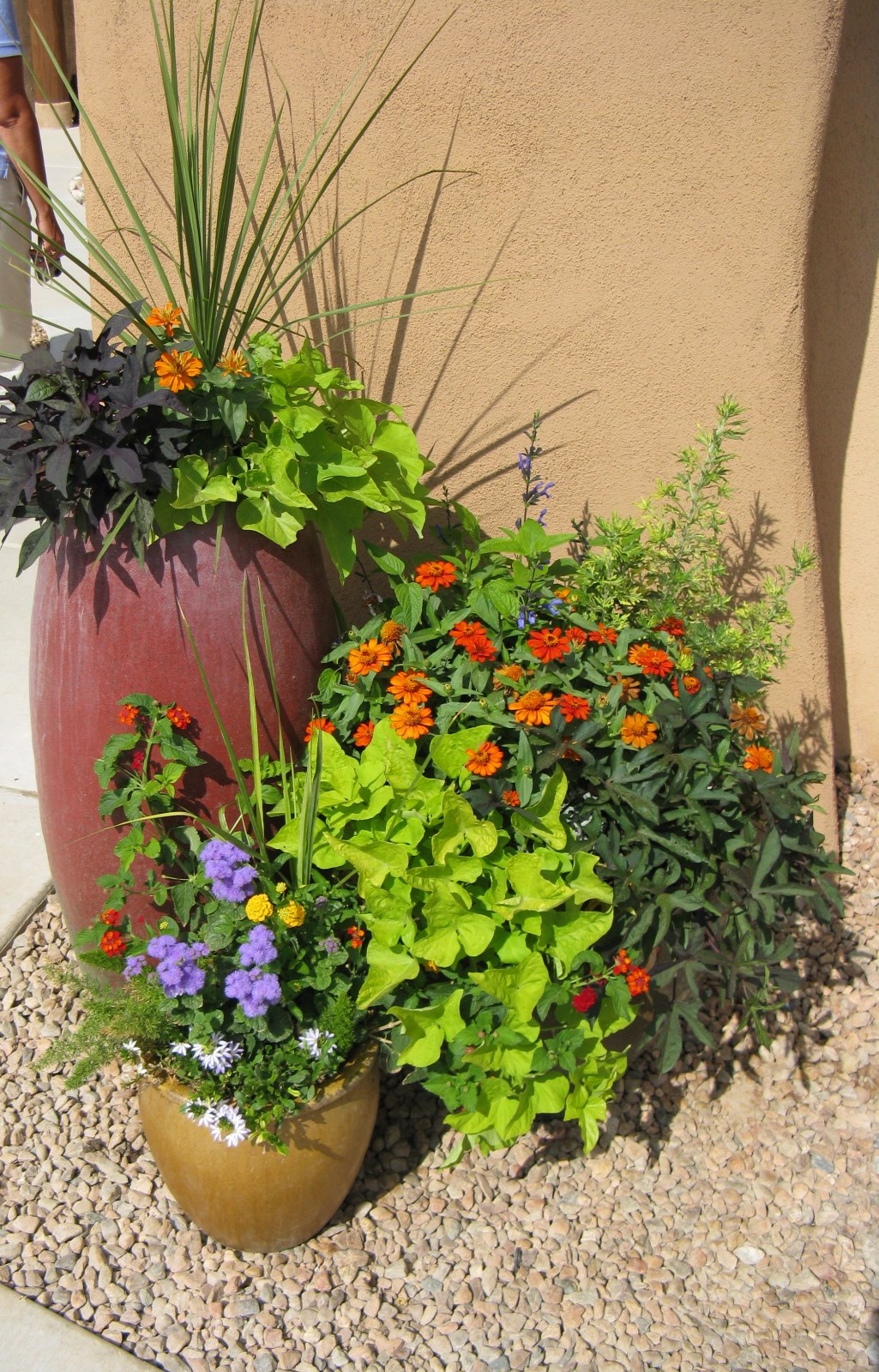Annual Planters
written by Anthony Reardon

OLATHE, KS: As we embark upon May, I can’t help but think back on all the Mother’s Day potted annual arrangements I have done over the years. As many horticulturists will know, being the lone member of the family with a green thumb and a degree to back it up means that you are first in line when it comes to beautifying mom and dad’s yard –not that I mind (*wink*). It’s easy to do and has become my traditional Mother’s Day gift. Adding to the fun, she enjoys bold and vibrant colors in her planters –with big flowers, ornate foliage, and unique plant specimens for people to enjoy. This gives me a lot to work with and a lot of room to be creative.
When potting annual planters, the three main factors that should be on your mind are simple: which plants will be my thrillers, fillers, and spillers.
Your thrillers will be the tall ones, beckoning attention to the arrangement and drawing the eye of passersby. These can be many plants, but commonly used ones include floral canna lily, spiky dracaena, feathery ornamental grasses, several leafy palms, massive elephant ears, vibrant cordyline, and pointed salvia. Towering over the other plants in your arrangement, these plants add depth and structure to your arrangement, as well as many varying leaf and flower shapes with differing textures.
The fillers of the arrangement will typically include the “mounding type” plants that you would see in many store-bought annual planters. Most common amongst these are the colorful flowering plants petunia, verbena, lobelia, calibrachoa, nemesia, alyssum, and diascia. Though their role is “filling,” they are an essential element to the arrangement. These plants can introduce various colors, textures, depths, pollinators, scents, and tones.
Spillers, as their name suggests, drape and trail over the edge of planters, expanding the overall surface area of a planted arrangement. Their purpose is to give viewers of the arrangement more physical plant matter to observe. These include vibrant sweet potato vine, silvery dichondra, flowery wave petunia or trailing verbena, or even simpler plants like Boston or English Ivy.
When arranging these, following “the rule of odds” will be your friend when making arrangements look natural and non-forced, as even-numbered and evenly-spaced plants rarely occur organically in nature. With this guide, you can plan to include 1-3 thrillers, 5-7 fillers, and 3-5 spillers depending on your pot size—increasing or decreasing the numbers as necessary with the scope of the container.
As for my mom’s planters… We’ll go with our coleus thrillers, geranium and wave petunia fillers, and sweet potato vine spillers that we’ve grown fond of. Remember, flowers aren’t the only plants that can contribute color. Tons of gorgeous foliage plants achieve that as well. Your annual planters will be vibrant and eye-turning for the year to come.
